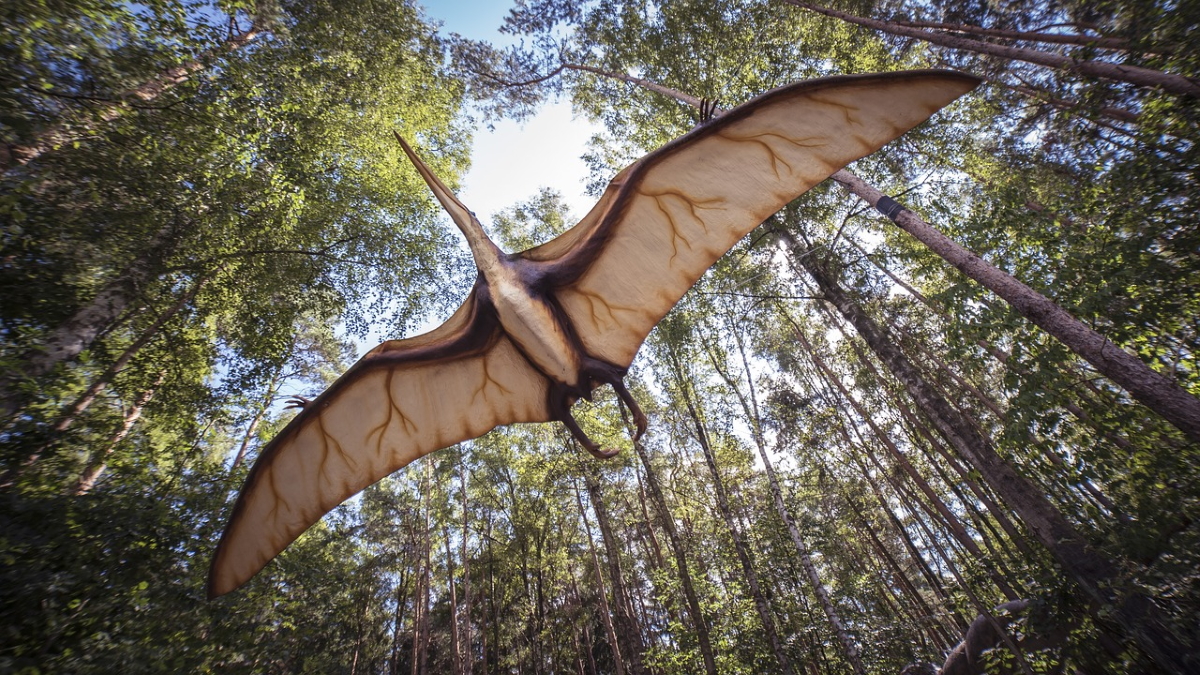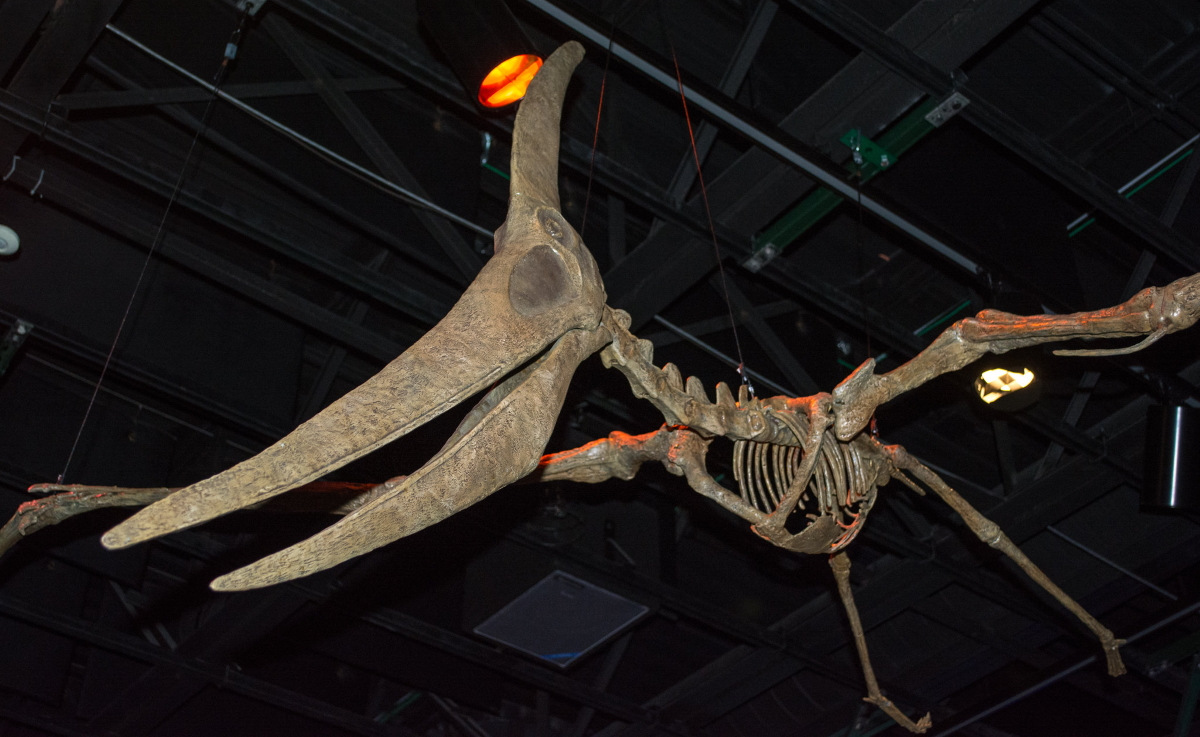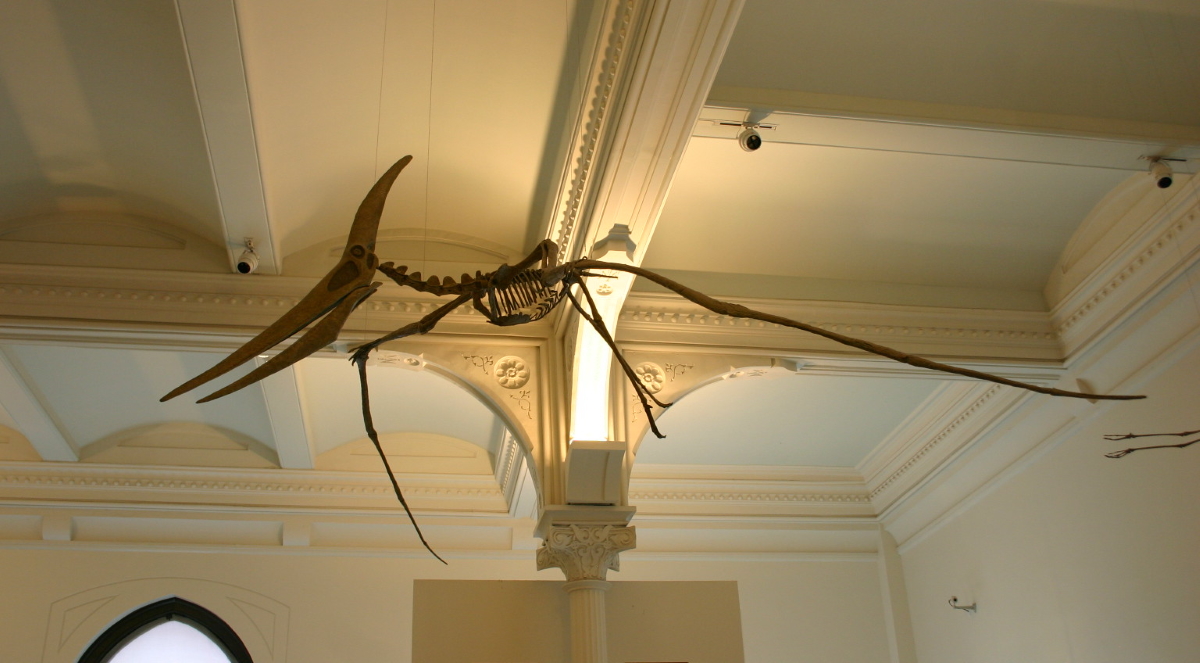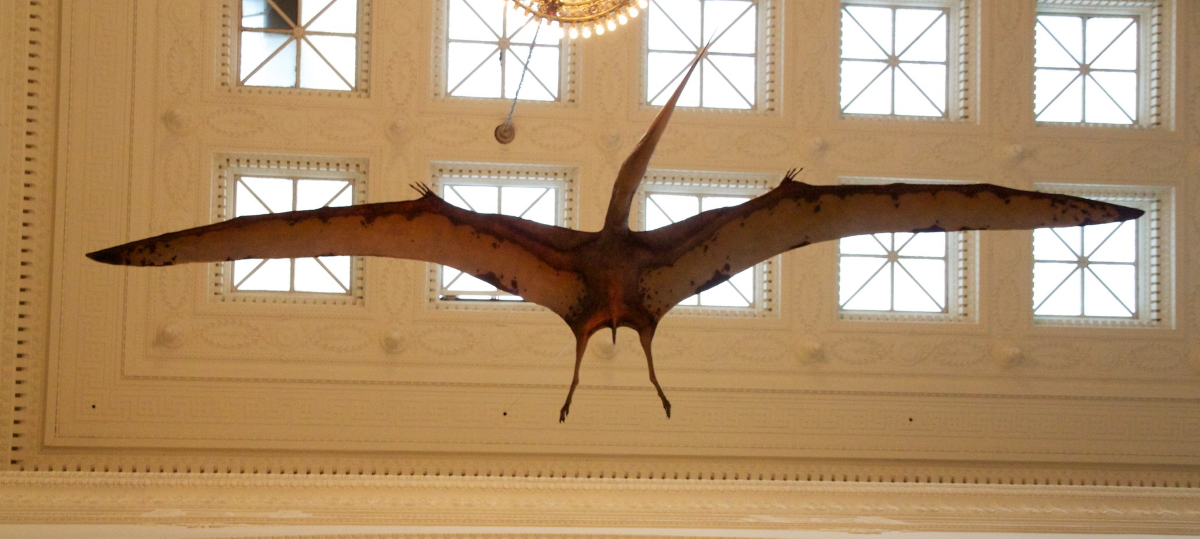
The Pteranodon was one of the best known flying reptiles that existed in the Late Cretaceous period. They lived between 85 and 88 million years ago, and belong to the pterosaur genus pteranodontid. Its geographical distribution was in North America, occupying the territories that are currently Alabama, Wyoming, Nebraska, South Dakota and Kansas. Besides the Pteranodon more than 1.200 skeletons have been found, many of them in good condition. The idea that we have of it today is very approximate thanks to the fossils found.
Despite thinking of the Pteranodon as a dinosaur, the truth is that it was not. They belonged to a sister clade to the dinosaurs, the Avemetatarsalia., where the dinosaurs belonged to the Saurischia and Ornithischia clades. Not for this reason, they have been less famous, since among the general public, they are well known, especially as a result of film adaptations where they include the Pteranodons within the world of dinosaurs. For being an extinct animal, and living together with the dinosaurs, we are going to talk about them. Both of their flights, diets, morphology, skull and curiosities.
Pteranodon Anatomy

Despite knowing very closely the morphology of Pteranodon, and that the largest skeletons found indicated lengths up to more than 7 meters, there is not entirely a consensus on the weight. On the one hand, it is known that those Pteranodon found older and in the adult phase would represent the males. All of them, with larger crests and narrower pelvises. In the females, on the other hand, the crests were smaller, just like their smaller size, and the broader pelvises were surely favored by the laying of eggs. However, its weight, the great unknown, suggests that is between 20 and 90 kilos, although the final consensus rather suggests an intermediate weight. The problem comes from the fact that there is no current animal, neither bats nor birds, that can resemble the Pteranodon in shape and anatomy.
De Among the different types of Pteranodon that are known there is a great plurality, there are some valid and well-known ones such as P. Longiceps, P. Stembergi, and then a long series of alternative species and some others that are in disuse or not entirely clear.
skull and crest

The Pteranodon skull was osseously very hard. Unlike some other more primitive pterosaurs like the Pterodactyl, the Pteranodon it had a toothless jaw. Its beak was formed by a solid bone mass at its edges, and was very elongated and ended in a point. Its upper jaw was longer than the lower one. And the most representative part of the skull in this specimen was its long and pronounced crest, about 80 centimeters on average. Its crest came from the projection of the frontal bones that ran up and back from the skull. Its length varied according to age, gender and species. Approximately the average length of his skull was 1 meters.
Food
The main diet of pteranodon was fish., since fossilized fish bones have been found in the stomach area and fragments of scales along the torso of several specimens. Even so, experts suppose that he also hunted invertebrates.
At first it was thought that this flying reptile fished by dipping its long beak into the water by means of a slow glide, based on the initial idea that it could not take off from the water. However, in 1994, researcher Bennett noted the strong build of the pteranodon's head, neck, and shoulders, leading to a new theory that it might. was able to take off from the water and thus dive into it to fish while swimming. Basically it is supposed to fold its wings back, just like modern-day gannets do.

Experts think that a small female of this species could easily have reached a minimum depth of 80cm with its beak, floating on the surface.
The flight of the Pteranodon
The flying style of this king of the skies is supposed to is comparable to that of our albatross:
- The wing shape is very similar (span to chord length is 9:1 for Pteranodon and 8:1 for albatross).
- Both are fishmongers, so surely the Pteranodon used the same flight pattern as the albatross, called "dynamic glide«, which consists of taking advantage of the low wind speed on the ocean surface to be able to make long journeys without flapping or having the need to use thermal currents.
Most likely, Pteranodon flight depended primarily on glide, as is often the case in long-winged seabirds, however it is speculated that it also made use of a rapid wingbeat and thus an active style of flight. This last theory is supported by wing loading studies carried out on this species, which consists of measuring the strength of the wings in relation to the weight of the body, discarding the initial idea that its wings were so large that it could only glide.

Experts assume that, like most pterosaurs, the Pteranodon took off by adopting a quadrupedal stance and propelling itself with a quick jump.
Curiosities
- The Pteranodon appears in various films, such as "In Search of the Enchanted Valley", a cartoon film for children. Then in others like Jurassic Park III, where together with the Spinosaurus they are the two main dinosaurs.
- Pteranodon means "toothless wing" in Latin.
- It is believed that the Pteranodon spent a large part of its life in the air, and it did so at a speed of about 25km/h since it was mostly dedicated to gliding.
- After various hypotheses raised throughout the XNUMXth century, it is believed that the function of the crest would have been merely sexual. Most of the theories that had been advanced for other uses, such as a counterweight or "rudder," were later discarded.
- The first found fossil remains were found in 1870 by Othniel Charles Marsh, in Kansas.
- There are more than 30 known types of Pteranodon, some of them reclassified and others not entirely confirmed.